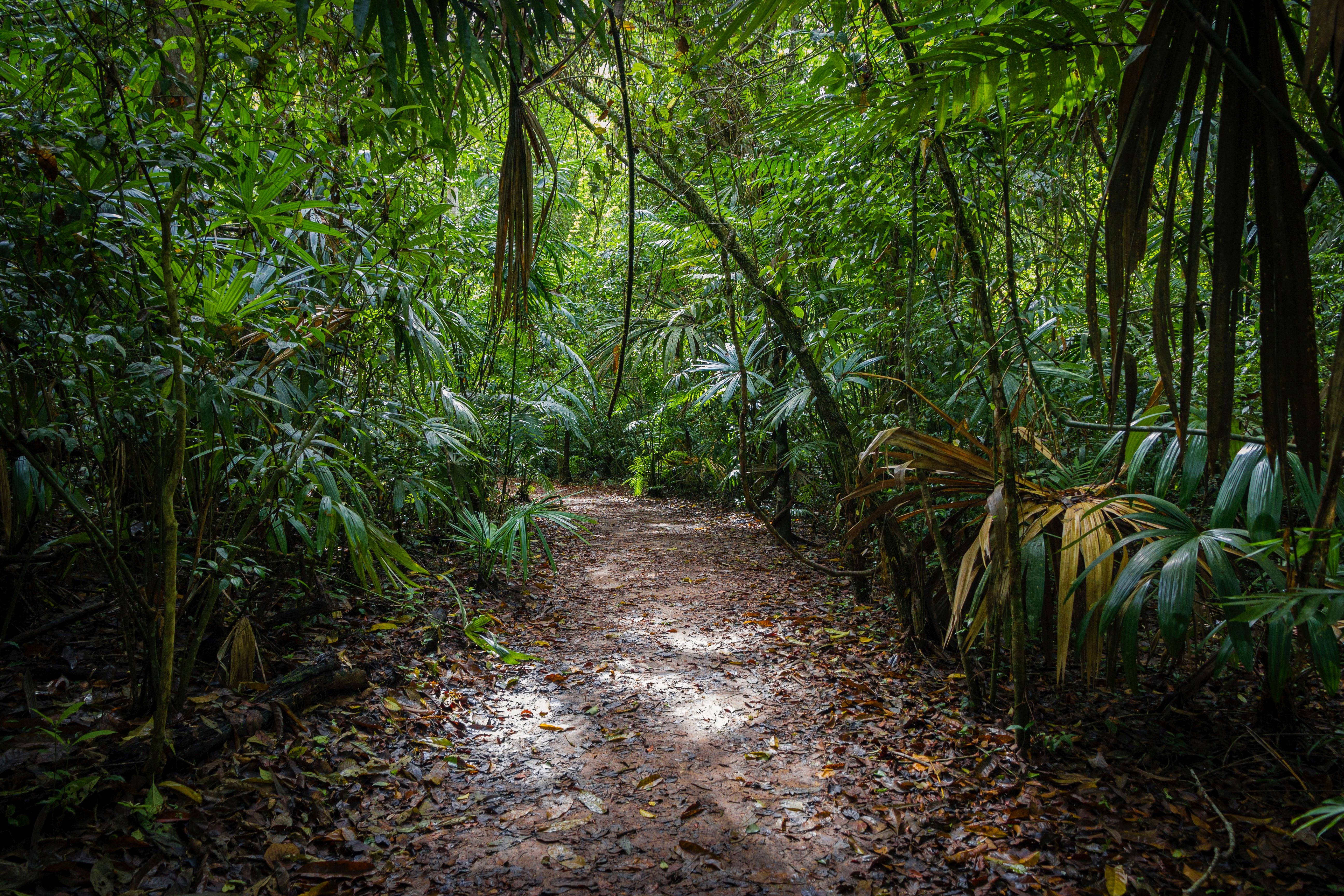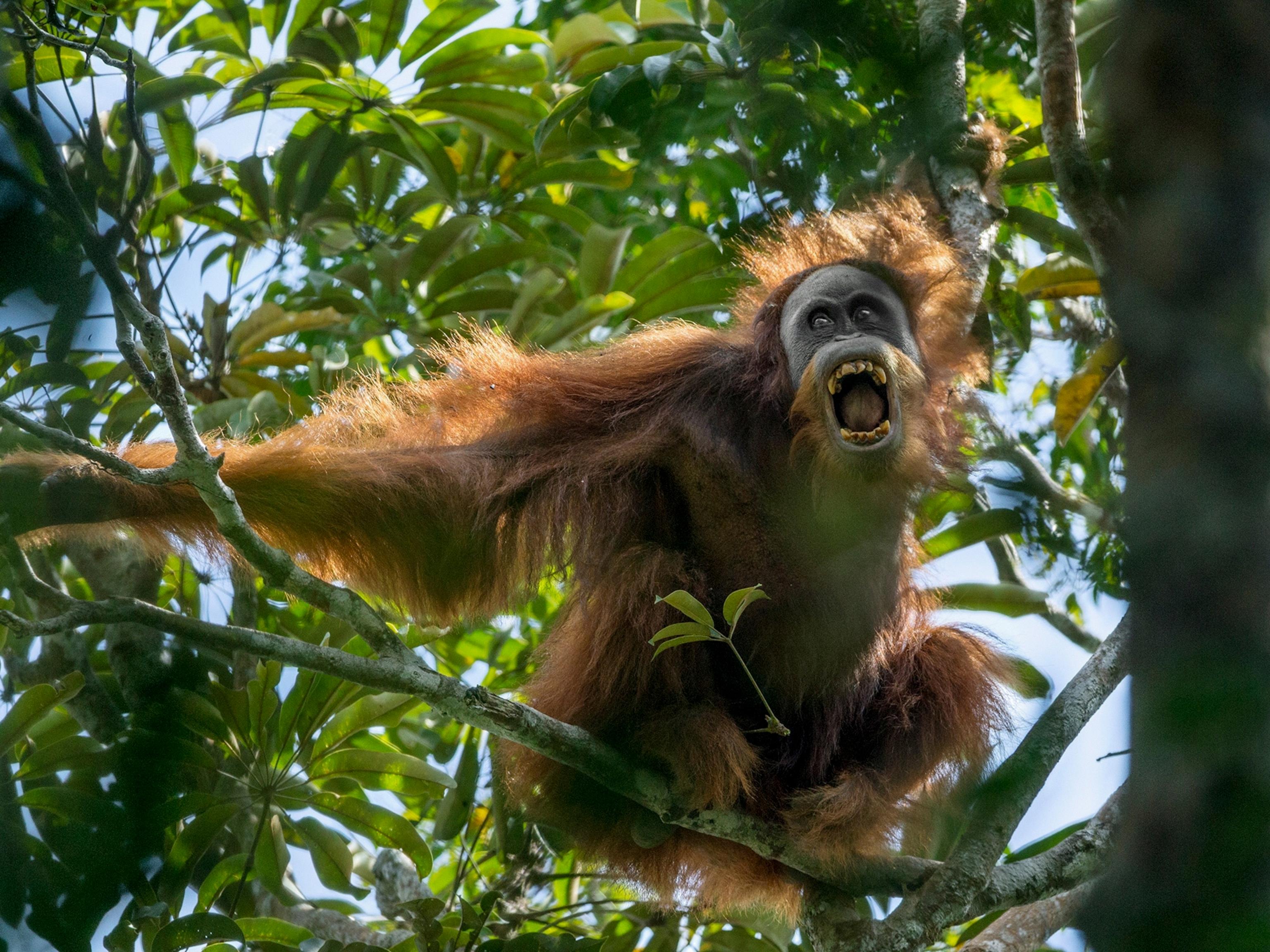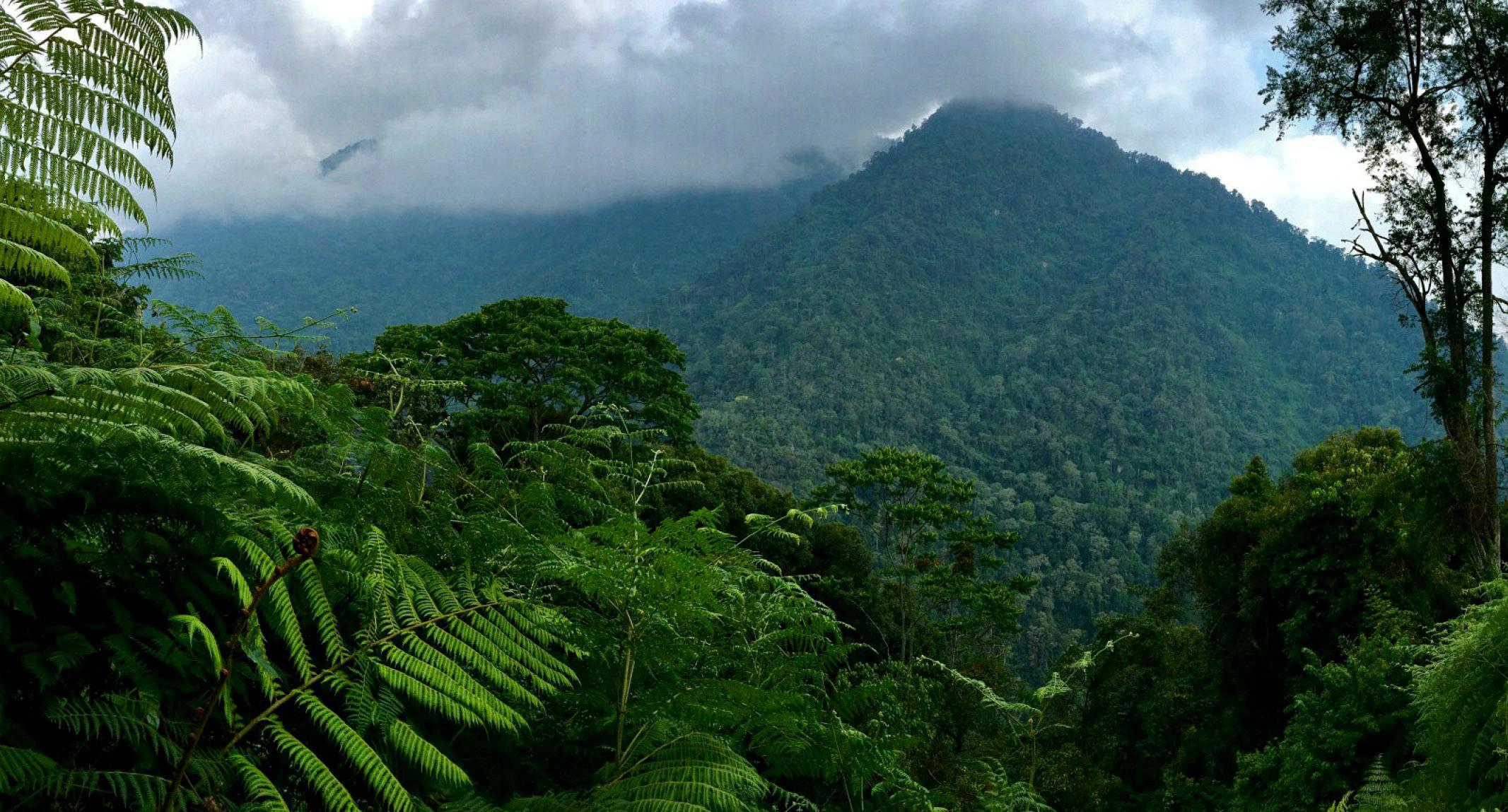Jungles are one of the most fascinating and diverse ecosystems on the planet. With over half of the world’s plant and animal species residing in jungles, they are a crucial component of our planet’s biodiversity. In this blog post, we will delve deeper into the world of jungles and explore some interesting facts about these remarkable habitats.
Firstly, it is important to understand that while jungles share some similarities with rainforests, they are not the same thing. Jungles generally have fewer trees than rainforests and receive more sunlight. They are found in hot and humid places with high levels of rainfall, usually near the equator. This unique climate is what makes jungles such a rich and diverse ecosystem, with a variety of plants and animals thriving within its borders.
Jungles are typically characterized by their thick forests, filled with a plethora of plants and vines. The ground is covered with a variety of plants, creating a lush undergrowth that supports a wide range of animal life. The temperature in a jungle can range from 78 to 95+ degrees Fahrenheit, with heavy rainfall of up to 1,000 centimeters (400+ inches) annually. The humidity in a jungle is consistently high at around 90%, making it a challenging environment for human habitation.
One of the defining features of a jungle is the tangled and overgrown mass of vegetation that covers large areas of land. This tangled vegetation provides an ideal habitat for a variety of animals, including monkeys, sloths, and jaguars. The dense vegetation also offers shelter and protection from predators, making it an ideal location for animals to raise their young.
Another interesting fact about jungles is that they are home to a variety of medicinal plants that have been used for centuries by indigenous peoples to treat a range of ailments. These plants have been used to treat everything from headaches to malaria and have even been used to develop drugs to treat diseases such as cancer and HIV.
Despite their beauty and diversity, jungles can also be a challenging environment for humans to navigate. Severe weather such as hurricanes and monsoons can have a significant impact on tactical operations in the jungle, making it a challenging environment for military operations.
Jungles are a remarkable and diverse ecosystem that are home to a wide variety of plants and animals. Despite their challenges, they continue to be an important component of our planet’s biodiversity and provie valuable resources for human use. Whether you’re exploring the depths of the Amazon or simply admiring a lush garden, the jungle is a world of wonder that never ceases to amaze.
Fun Facts About the Jungle
One fascinating fact about the jungle is that it is home to more than half of the world’s plant and animal species. This incredible biodiversity is due to the jungle’s unique climate and environment. Jungles are similar to rainforests but have a slightly different makeup, with fewer trees and more sunlight.
Jungles are typically found in hot, humid regions with high levels of rainfall, often near the equator. The combination of these factors creates a lush environment that supports a wide variety of plant and animal life.
Some other interesting facts about the jungle include:
– The Amazon rainforest, which is the largest jungle in the world, covers over 6.7 million square kilometers and is home to more than 2.5 million insect species.
– Jungles are often referred to as the “lungs of the earth” because they produce a significant amount of oxygen throuh photosynthesis.
– Many of the plants and animals found in the jungle have unique adaptations that allow them to survive in this challenging environment. For example, some plants have developed large, broad leaves to capture sunlight, while some animals have evolved camouflaging abilities to blend in with their surroundings.
The jungle is a fascinating and vital part of our planet’s ecosystem, and its incredible biodiversity and unique characteristics make it a truly remarkable place.
Source: techcrunch.com
What Characteristics Define a Jungle?
A jungle is a dense, tangled, and overgrown mass of vegetation that covers a large area of land. It is characterized by a humid and tropical climate, with abundant rainfall and high temperatures. The term “jungle” can be used interchangeably with “rainforest,” although rainforests are usually considered to be more diverse in terms of plant and animal species.
One of the key features of a jungle is the canopy layer, which refers to the uppermost layer of trees that form a dense and continuous cover over the forest floor. The canopy layer is home to a wide variety of plant and animal species, including epiphytes (plants that grow on oher plants), birds, monkeys, and other primates.
Another important feature of a jungle is the understory layer, which is located beneath the canopy and consists of smaller trees, shrubs, and other plants. The understory layer is home to a variety of animals, including insects, amphibians, and reptiles.
The forest floor of a jungle is typically covered with a thick layer of leaf litter and other organic matter, which provides nutrients for the plants and animals that live in the forest.
In addition to its diverse array of plant and animal life, a jungle is also an important source of natural resources, including timber, medicinal plants, and other products.
The combination of high rainfall, warm temperatures, and dense vegetation makes a jungle a unique and fascinating ecosystem that supports a wide variety of life.
Common Features of Jungles
Jungles are characterized by their unique features that make them distinct from other natural environments. These features can greatly impact tactical operations in the jungle. Based on research and expert opinions, the three common jungle features are high temperatures, heavy rainfall, and high humidity.
High temperatures are a common feature of the jungle environment. The temperature in the jungle ranges from 78 to 95+ degrees Fahrenheit. This high temperature can cause discomfort and fatigue to individuals performing tactical operations in the jungle. It can also lead to dehydration if not properly hydrated.
Heavy rainfall is another common feature of the jungle environment. The jungle receives as much as 1,000 centimeters (400+ inches) of rain annually. This heavy rainfall can lead to flooding, which can make tactical operations difficult. It can also cause landslides, which can be hazardous to individuals in the area.
High humidity is also a common feature of the jungle environment. The humidity in the jungle can reach up to 90 percent throughot the year. This high humidity can cause discomfort and make it difficult for individuals to regulate their body temperature. It can also lead to the growth of mold and mildew, which can be hazardous to individuals in the area.
The three common jungle features are high temperatures, heavy rainfall, and high humidity. These features can have a significant impact on tactical operations in the jungle and should be taken into consideration when planning and executing operations in this environment.
The Special Qualities of a Jungle
Jungles are special and unique ecosystems that are characterized by their dense forests and abundant plant life. They are typically found in tropical regions were the climate is warm and humid, providing ideal conditions for plant growth. There are several key features that make jungles special:
1. Biodiversity: Jungles are home to an incredible variety of plant and animal species. They are among the most biodiverse ecosystems on Earth, with thousands of different species coexisting in a relatively small area.
2. Canopy layers: The dense vegetation in jungles creates a series of canopy layers, or levels of vegetation, that provide habitat for different types of plants and animals. These layers can be as many as five or six deep, and they create a complex ecosystem that supports a wide variety of life.
3. Vines and lianas: Jungles are known for their abundance of vines and lianas, which are woody climbing plants that can grow up to hundreds of feet in length. These plants help to create a dense and tangled web of vegetation that is characteristic of jungle environments.
4. Rainfall: Jungles receive a lot of rainfall, often exceeding 100 inches per year. This constant moisture helps to support the lush plant growth that is characteristic of jungle environments.
5. Importance to humans: Jungles are important to humans for a variety of reasons. They provide resources such as food, medicine, and timber, and they also play a crucial role in regulating the Earth’s climate and maintaining biodiversity.
Jungles are special because of their incredible biodiversity, complex canopy layers, abundance of vines and lianas, high levels of rainfall, and importance to human societies. These ecosystems are truly unique and offer a glimpse into the incredible diversity of life on Earth.
Source: nationalgeographic.com
The Most Famous Jungle in the World
The most famous jungle in the world is the Amazon Rainforest. Located in South America, the Amazon is the largest and best known tropical rainforest on the planet. It is estimated that the Amazon rainforest covers an area of approximately 6.7 million square kilometers or 2.7 million square miles, spanning across nine different countries including Brazil, Peru, and Colombia.
The Amazon rainforest is home to a vast array of plant and animal species, many of which are found nowhere else on Earth. It is also a critical component of the global climate system, providing a significant source of oxygen and serving as a carbon sink, helping to regulate the Earth’s climate.
The Amazon rainforest is also home to many indigenous communities who have lived in harmony with the forest for thousands of years, utilizing its resources for food, medicine, and shelter. Unfortunately, the Amazon rainforest is facing significant threats from deforestation, mining, and other forms of human activity.
Despite tese challenges, efforts are underway to protect and preserve the Amazon rainforest for future generations. Governments, NGOs, and local communities are working together to promote sustainable development and protect the rich biodiversity of this iconic jungle.
The Largest Jungle in the World
The largest jungle in the world is the Amazon Rainforest. It is the most extensive tropical rainforest globally, covering a vast region of South America, including parts of nine countries. The Amazon rainforest spans approximately 6.7 million square kilometers, wich is nearly 40% of South America’s total landmass. This rainforest is also home to one of the most extensive collections of flora and fauna globally, including over 40,000 plant species, 1,300 bird species, 3,000 types of fish, and 430 mammals. Moreover, the Amazon River, the second-longest river in the world, flows through the rainforest, adding to its ecological significance. The Amazon rainforest serves a vital role in regulating the Earth’s climate by absorbing and storing large amounts of carbon dioxide. It helps to prevent global warming by producing oxygen and maintaining the planet’s biodiversity.
10 Things You Can See in the Jungle
Jungle, also known as tropical rainforest, is a vast and dense forest that is home to various species of flora and fauna. It is a place of immense biodiversity and natural beauty. The jungle is characterized by tall trees, thick undergrowth, and a humid climate. In this article, we will discuss ten things that one can see in the jungle.
1. Trees: The jungle is dominated by tall and broad-leaved trees that form a dense canopy. These trees provide shelter and food to various animals and birds.
2. Snakes: The jungle is home to various species of snakes, including the deadly king cobra, green tree python, and boa constrictor. These snakes play a vital role in maintaining the ecosystem.
3. Squirrel: The jungle is also home to several species of squirrels, including the Malabar giant squirrel, wich is known for its vibrant colors.
4. Leaves: The jungle is filled with a wide variety of leaves, ranging from small and simple to large and complex. These leaves are an essential part of the forest ecosystem.
5. Sparrows: The jungle is home to various species of sparrows, including the white-crowned sparrow and the chipping sparrow. These birds play a crucial role in pollination and seed dispersal.
6. Crows: The jungle is also home to various species of crows, including the common raven and the American crow. These birds are known for their intelligence and problem-solving skills.
7. Butterflies: The jungle is home to several species of butterflies, including the blue morpho and the monarch butterfly. These butterflies play a crucial role in pollination.
8. Sky: The jungle is characterized by a clear blue sky that is visible through the dense canopy of trees. This sky provides a beautiful backdrop to the forest.
9. Grass: The jungle is also home to various species of grass, including bamboo and elephant grass. These plants provide food and shelter to several animals.
10. Fruits: The jungle is home to several species of fruits, including bananas, mangoes, and papayas. These fruits provide a vital source of nutrition to various animals and birds.
The jungle is a place of immense biodiversity and natural beauty. It is characterized by tall trees, thick undergrowth, and a humid climate. The jungle is home to various species of flora and fauna, including trees, snakes, squirrels, leaves, sparrows, crows, butterflies, sky, grass, and fruits. Each of these elements plays a crucial role in maintaining the ecosystem of the jungle.
Source: secretcompass.com
Exploring Rare Animals in the Jungle
The jungle, also kown as the rainforest, is home to a vast array of unique and diverse animal species. However, one particular animal that stands out as being rare is the golden lion tamarin monkey.
The golden lion tamarin monkey is a small primate that is native to the Atlantic coastal forests of Brazil. Weighing in at just one pound, it is one of the smallest primates in the world. Its name comes from its distinctive appearance, which resembles that of a lion. This is due to its long, golden-colored fur that surrounds its face and neck.
Despite being a rare species, the golden lion tamarin monkey plays an important role in the ecosystem of the rainforest. It helps to disperse seeds and pollinate flowers, contributing to the growth and survival of many plant species.
Unfortunately, due to deforestation and habitat loss, the golden lion tamarin monkey has become endangered. Conservation efforts have been put in place to help protect and preserve this rare and unique animal. These efforts include reforestation, habitat protection, and captive breeding programs.
Other rare animals that can be found in the jungle include the jaguar, poison dart frog, Amazonian manatee, and the river dolphin. These animals, like the golden lion tamarin monkey, also play important roles in their respective ecosystems and are in need of conservation efforts to ensure their survival.
Conclusion
Jungles are incredible ecosystems that are home to a vast array of plant and animal species. These areas are characterized by their dense vegetation, high temperatures, heavy rainfall, and high humidity. Although jungles and rainforests share some similarities, they are not the same thing. Jungles have fewer trees and more sunlight, while rainforests have extremely thick canopies of trees that block out the sunlight. If you ever find yourself in a jungle, be prepared for the intense heat, humidity, and unpredictable weather. But also take the time to appreciate the beauty and diversity of this unique and special environment.



